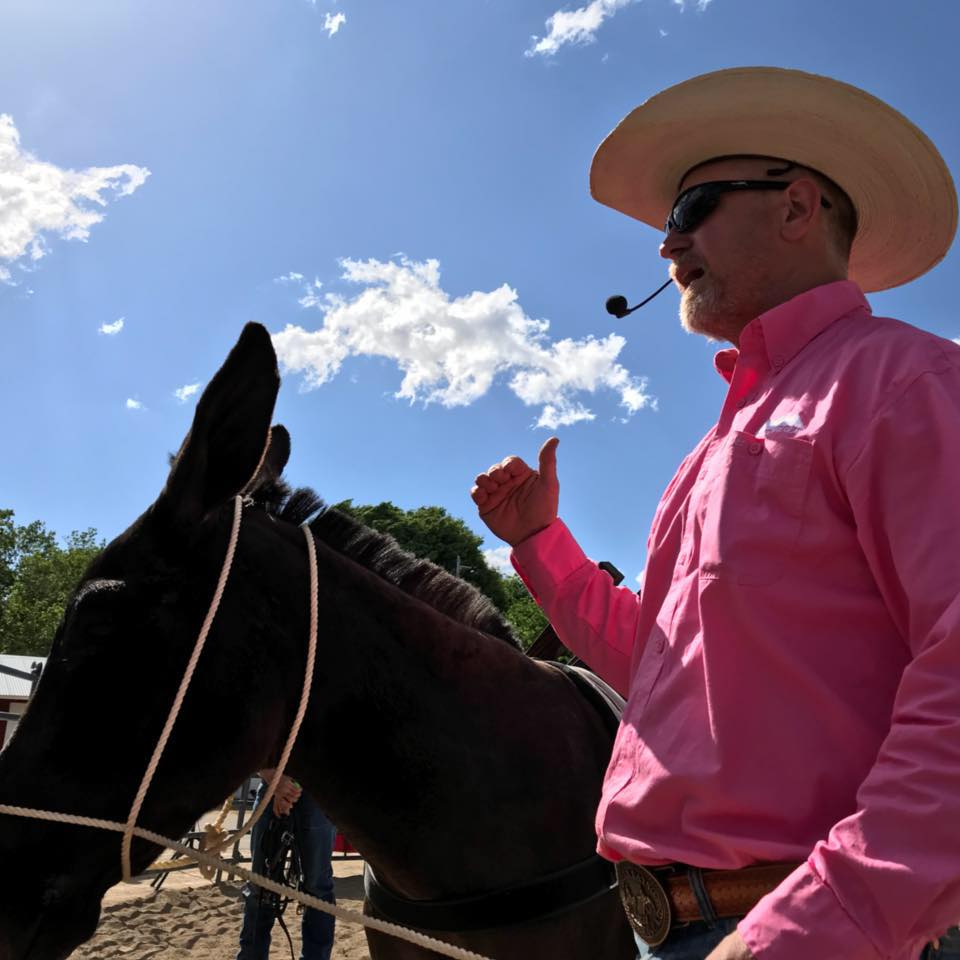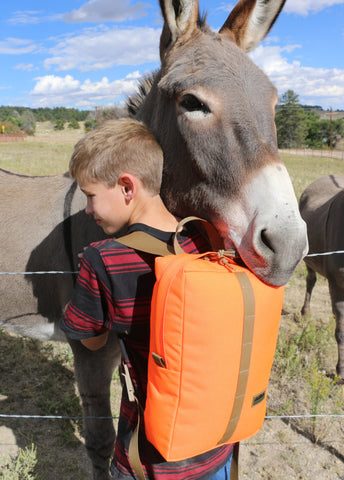I live in Colorado and I use donkeys as pack animals in wilderness areas where I may be twenty miles from civilization. I depend on my donkeys and they depend on me. When I train these animals I try to base my methods on how I intend to use them. I need my donkeys to work well in a pack string. That means they must respect the halter. If I’m leading six donkeys along a narrow mountain trail or crossing a fast moving stream I need to have confidence they won’t get into trouble and injure themselves, another donkey or me. I use two primary approaches in considering my goals for training. First: I want the donkeys to see me as the herd leader, to trust me and respect me. Second: I want to ensure they are comfortable and safe. In this post I will focus on my first approach to training, establishing respect and trust.
I try to model my training techniques from how I observe donkeys interacting in a herd environment. Donkeys don’t operate on a system of rewards and positive reinforcement. For example: When a gelding checks to see if a jennet is in season he sniffs her rear. If she’s not in heat and she doesn’t want his attention she will swish her tail. This is her way of ASKING him to leave her alone. But, males can be hard headed so, he might try again. Now, she may drop her head, pin her ears back and turn her head towards him. She may even attempt to bite him. At this point she’s TELLING him to leave her alone. But, what if he persists? That’s when things can get physical. She will back up towards him and kick. This is her way of DEMANDING he change his behavior. She will persist until she gets results.
I’ve heard several experienced trainers use the term, “less is more”. I have found this to be true on so many occasions. Donkeys work well with a light touch. A light touch is more effective than excessive force because donkeys brace against pressure. If I use too much pressure during a stressful situation or at incorrect times the donkey may shut down. At this point there is no training taking place and the situation is not good for either the trainer or the donkey.
However, there are times when I need to be firm and get my point across. A light touch may not communicate my attempt to correct or redirect behavior. If I need to communicate “tell” or “demand” how should I do it? I can’t pin my ears back. Well, I can wiggle them but it doesn’t have the same effect. Also, trying to bite a donkey would just be silly. I’d get a mouth full of hair and the donkey would probably enjoy the attention. And kicking…well that’s out of the question.
When the jennet turned to kick the gelding there was nothing he could do but stand there and take it. Donkeys are very accurate when they kick. If she decides she’s going to kick him in the ribs that’s right where that gelding is going to get it. In this exchange I have noticed something very important. As she gave out a squeal and hurled her hooves in his direction the gelding stood still but pointed his nose high in the air. That’s because he wants to protect his nose. It seems donkeys will protect their nose more than any other part of their body. When the hooves start flying donkeys will immediately put their heads up. So, since I am not going to bite, hit or kick a donkey I can use what I have observed to my advantage.
The best way I have found to properly use the method of pressure and release is to use an old tool called a Come-a-long hitch. It’s a light weight, three strand, 5/16” waxed nylon lariat about 25 feet long. Using this technique correctly has proven very effective. Once the Come-a-long hitch is properly positioned I apply light pressure. As soon as I see forward movement I release the pressure. Timing is everything. I am also communicating to the donkey that I understand it has a desire to protect it’s nose. Releasing the pressure when I get the correct response demonstrates I am respecting the donkey’s well being. If used correctly a bond is quickly established between the handler and the donkey. It is amazing to see how fast this technique can work. I consider respect and trust two very important steps to helping the donkey reach it’s full potential.
The Come-a-long hitch works so well because it is a form of communication the donkey already understands. When the jennet was showing aggressive behavior towards the gelding it was her way of applying pressure to stop his actions. When she got the response she wanted she stopped kicking, thereby releasing the pressure. Using the concept of pressure and release while maintaining a light touch has worked the best for me in achieving my training goals. Also, because a donkey has such a deep instinct for self preservation, I have not seen them pull away hard enough to injure themselves.
I am not claiming that the methods I use are the only way to train or the best for every situation. But, the concepts I use work well for the way I intend to use my animals. Whatever technique you use be sure and build trust and establish yourself as the herd leader before you attempt anything else. This is important for your safety and the enjoyment of your animal.





Paul Englund
Hello,
We’re in line to get two BLM donkeys after the gov shutdown is over. We are stock dog trainers, but have little experience training horses or donkeys. I have watched several of your YouTube videos on training donkeys and like your approach. Do you offer a video series for sale that would help us understand training techniques? We will be working with a local pro trainer as well, so we’re not on our own. But more background is better. Thanks!